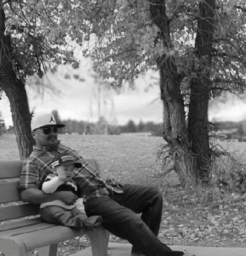If you’re suspicious that a home might be contaminated with meth but don’t really “see” anything, then you’re right to be concerned. Methamphetamine (or meth) residue isn’t always obvious, and in most cases, you won’t see anything at all. That’s what makes it especially dangerous.
In this article, our Colorado environmental remediation team will explain what meth is, what it looks like in its various forms, and how meth contamination can (and can’t) be detected visually.
What Is Meth?
Methamphetamine is a powerful and highly addictive stimulant. Medically, it’s sometimes prescribed in very controlled doses for ADHD or obesity, but on the street, it’s sold under names like crystal, ice, crank, or speed. It floods the brain with dopamine, giving users a strong sense of euphoria and making it dangerously addictive.
Meth production and usage often leaves behind toxic residue. This contamination can cling to walls, ceilings, HVAC systems, and just about every surface in a home, even if the home looks “clean.”
What Do Different Types of Meth Look Like?
Understanding the forms meth comes in can help identify signs of use or residue. These are the three most commonly seen varieties:
Powdered Meth
This form appears as a white or off-white powder, similar to cocaine. It may be loosely packaged or stored in plastic baggies. Powdered meth can cling to vents, countertops, or any porous surface.
Meth Pills
Less common, these are often disguised as prescription medication. Meth pills might not leave visible residue, but they can still result in contamination if crushed, smoked, or handled repeatedly indoors.
Crystal Meth
The most recognizable form, crystal meth looks like clear or bluish shards of glass or rock salt. Often smoked or heated, crystal meth releases vapors that leave invisible, toxic residues behind. These are especially dangerous when confined indoors.
What Does Meth Contamination Look Like?
Meth contamination is tricky — it often doesn’t look like anything at all. While some signs may hint at a problem, the absence of visible residue doesn’t mean a property is clean. In fact, homes that appear to be spotless can still be dangerously contaminated. Meth particles can bond to drywall, settle in HVAC systems, and linger on surfaces indefinitely.
Possible Visual Clues of Meth Contamination
We really want to hammer home the idea that you’re unlikely to be able to tell through visual inspection if a home has been contaminated. However, some (unreliable) visual clues that point towards meth contamination include:
- Yellow or brown staining on walls and ceilings: Often mistaken for nicotine stains, these can result from meth smoke or vapor.
- Greasy or sticky residue: A filmy buildup on mirrors, windows, or surfaces may point to chemical exposure.
- Red discoloration in plumbing fixtures: Some meth cooking methods leave reddish stains in sinks, tubs, or toilets, especially when red phosphorus is used.
- Coffee filters or glassware with unusual staining: Items used in meth production may be left behind and show signs of chemical residue.
- Burn marks or scorched surfaces in unusual places: These can indicate the use of open flames or heat sources during manufacturing.
- Strong or unusual odors: Meth production can leave behind a chemical smell that is sweet, sour, or similar to ammonia, acetone, or camp fuel.
Detecting Meth Contamination
The only reliable way to confirm meth residue is through professional testing. Surface samples taken from walls, HVAC vents, floors, and countertops are sent to a certified lab to determine contamination levels.
If you suspect meth contamination, avoid relying on your senses. No smell, stain, or strange behavior is proof on its own. Get in touch with a meth remediation contractor or look for “meth decontamination” services.
Meth Decontamination Services
If you’re buying, renting, or managing a property and something feels off — or if you’ve noticed strange odors, excessive security measures, or odd staining — it’s worth getting it checked. Meth residue can seriously affect indoor air quality and health, especially for kids and pets.
Still have questions? Reach out to a certified meth remediation team in your area to schedule an inspection or discuss your concerns.


